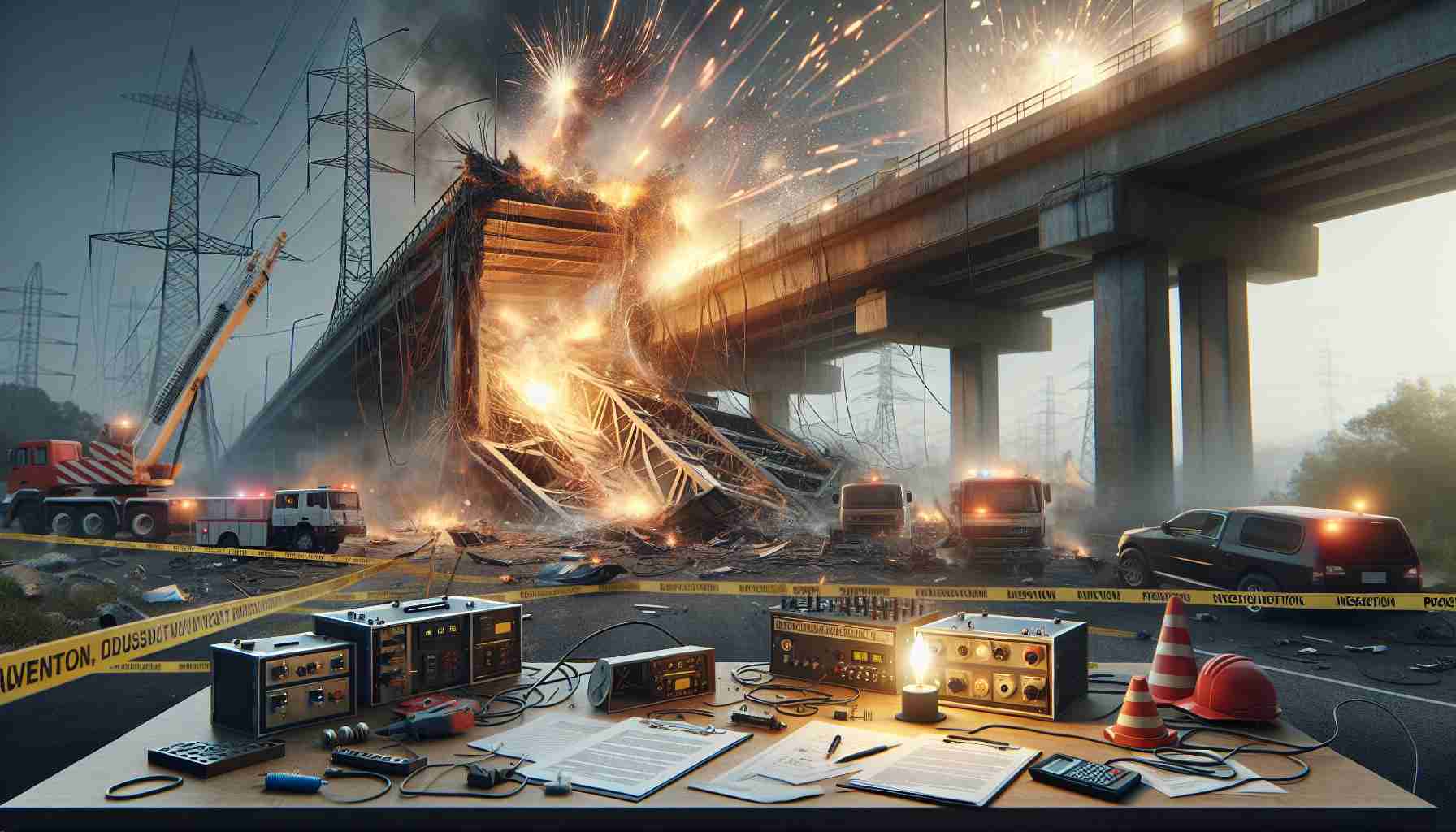An electrical malfunction aboard the cargo ship Dali was revealed as the likely culprit in the devastating collapse of Baltimore’s Francis Scott Key Bridge. After disconnection of a problematic cable triggered a blackout, the vessel lost power and collided with the bridge, resulting in tragic consequences for a roadwork crew.
Previous reports suggested a series of power failures on the Dali, with the new findings shedding light on specific details leading up to the fatal incident. Issues with the ship’s electrical system were evident from the beginning, starting with an initial power outage while docked in Baltimore due to maintenance oversight.
Further investigations indicated that a loose cable in the ship’s electrical configuration could have caused a critical breaker to open, resulting in the blackout scenario that played out during the collision. Manufacturers from Hyundai, the ship’s electrical system supplier, were involved in conducting tests to confirm the potential impact of the malfunction.
While questions linger about maintenance practices and crew responsibilities, experts acknowledge the challenges of detecting such issues in a complex and dynamic maritime environment. The meticulous investigation process exemplifies the commitment to uncovering the root cause of the disaster and improving safety measures for future maritime operations.
An in-depth analysis following the bridge collapse incident involving the cargo ship Dali has brought to light additional intricate details surrounding the electrical malfunction. The investigation unveiled that the root cause of the collapse was linked to a malfunctioning backup generator on the ship, rather than just a loose cable as initially speculated.
One of the key questions arising from this revelation is why the backup generator failed to kick in during the power outage, ultimately leading to the collision with the bridge. This raises concerns about the reliability and maintenance protocols of essential electrical systems on board vessels.
Furthermore, experts are exploring the possibility of a systemic issue within the maritime industry regarding the monitoring and upkeep of electrical components on ships. The incident has sparked discussions on the need for stricter regulations and guidelines to prevent similar catastrophic events in the future.
Another significant challenge faced during the investigation was the coordination between multiple stakeholders, including the ship operators, manufacturers, and regulatory authorities. Ensuring transparency and cooperation among these parties proved to be crucial in piecing together the sequence of events that led to the bridge collapse.
Advantages of this meticulous investigation include the opportunity to identify potential weaknesses in current maritime safety standards and implement necessary improvements. By understanding the intricacies of the electrical malfunction, authorities can develop targeted solutions to enhance the resilience of ship systems and prevent similar accidents.
On the other hand, one of the disadvantages of such investigations is the time and resources required to conduct a thorough analysis, which could result in delays in addressing immediate safety concerns within the industry. Balancing the need for comprehensive investigations with prompt action to mitigate risks poses a significant challenge for regulatory bodies.
For more information on maritime safety regulations and industry standards, you can visit Maritime Administration.
